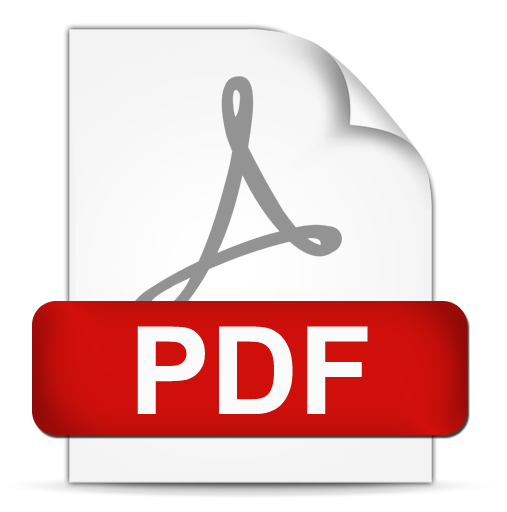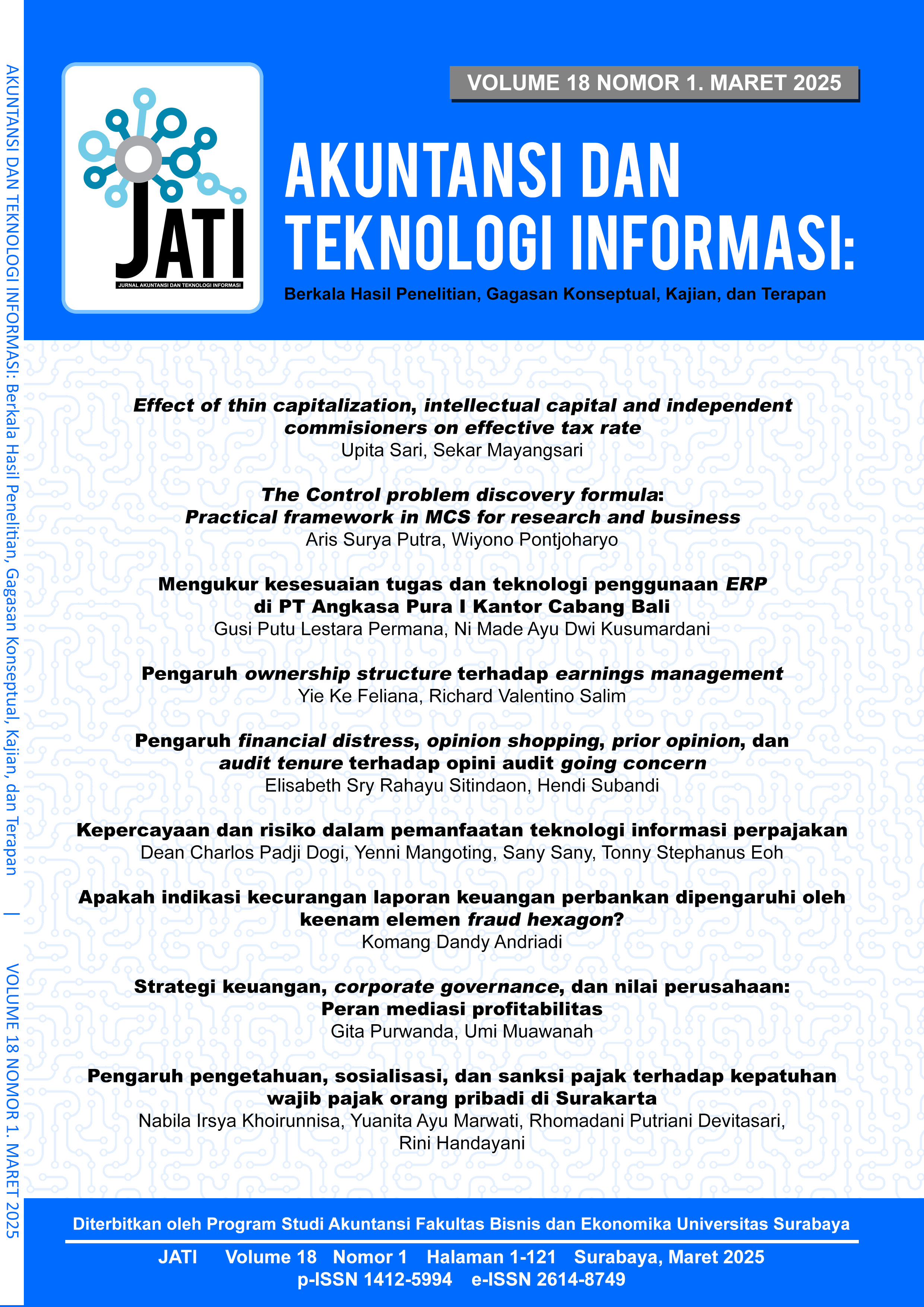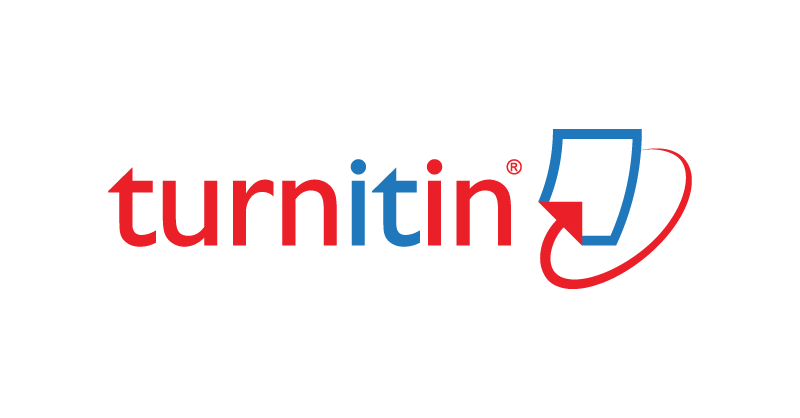Mengukur kesesuaian tugas dan teknologi penggunaan ERP di PT Angkasa Pura I Kantor Cabang Bali
 Abstract Views:
359 times
Abstract Views:
359 times
 PDF Downloads:
301 times
PDF Downloads:
301 times
Abstract
Purpose - This study aims to measure the alignment between tasks and technology in the implementation of Enterprise Resource Planning (ERP) systems. Task alignment is measured using the Task Technology Fit (TTF) model.
Methods - This study adopts a quantitative approach focusing on employees who are users of Enterprise Resource Planning systems. A saturated sampling technique is employed, where the entire population is considered as the sample. The data collected includes primary data obtained through questionnaires, which are evaluated using a Likert scale. Data analysis is performed using the Partial Least Squares (PLS) method.
Findings - Employee performance tends to improve when technology provides features and support that align with task requirements. The level of technology utilization contributes to enhanced performance, where increased use of technology is followed by improved employee performance.
Implications - This study demonstrates that the Task Technology Fit (TTF) model is relevant in measuring the alignment between tasks and technology in ERP system implementation.
Originality - This study develops the Task Technology Fit model by integrating constructs from the Technology Acceptance Model, thereby revealing the relationship between task alignment, technology, and psychological factors that influence user acceptance of the technological system.
Downloads
References
https://doi.org/10.20885/jsb.vol20.iss1.art3
Almajali, D. A., Omar, F., Alsokkar, A., Alsherideh, A. S., Masa’Deh, R., & Dahalin, Z. (2022). Enterprise resource planning success in Jordan from the perspective of IT-Business strategic alignment. Cogent Social Sciences, 8(1). https://doi.org/10.1080/23311886.2022.2062095
Alvianto, M. N. H., Adam, N. P., Sodik, I. A., Sediyono, E., & Widodo, A. P. (2022). Dampak Dan Faktor Kesuksesan Penerapan Enterprise Resource Planning Terhadap Kinerja Organisasi: Sistematic Literature Review. Jurnal Nasional Teknologi Dan Sistem Informasi, 7(3), 172–180. https://doi.org/10.25077/teknosi.v7i3.2021.172-180
Ananda, F., Putra, R. D., & Hendrastyo, V. S. (2017). Kesuksesan Implementasi System Application Product (Sap) Studi Di Pt. Semen Padang. Jurnal Pundi, 1(1), 1–10. https://doi.org/10.31575/jp.v1i1.4
Ashianti, A., & Fani, A. (2013). Pengaruh Kesesuaian Tugas-Teknologi, Kepercayaan dan Efektivitas Sistem Informasi Akuntansi Terhadap Kinerja Individu pada Pasar Swalayan di Kota Tangerang. Jurnal ULTIMA Accounting, 5(2), 62–80. https://doi.org/10.31937/akuntansi.v5i2.152
Childa Maulina, Endang Siti Astuti, K. (2015). Pengaruh Karakteristik Tugas , Teknologi Informasi Dan Individu Terhadap TTF, Utilisasi Dan Kinerja. JISIP Universitas Tribuwana Tunggadewi, 4(1), 108–119.
Dessyana, D., & Yolanda, Y. (2022). Informasi Terhadap Kepuasan Pengguna Enterprise Resource Planning-System Application And Product In Data Processing (ERP-SAP) Pada PT. Inalum (Persero). JIMAT (Jurnal Ilmiah Mahasiswa …, 259–270. https://ejournal.undiksha.ac.id/index.php/S1ak/article/view/41017%0Ahttps://ejournal.undiksha. ac.id/index.php/S1ak/article/viewFile/41017/21414
Dewi, P. P., & Asriani, N. L. P. (2019). Analisis Faktor-Faktor Kesuksesan Penerapan Enterprise Resource Planning ( Erp ) Pada Perusahaan Pengguna Erp Wilayah Bali Success Factors Analysis Of The Application Of " Enterprise Resource Planning " ( Erp ) In Erp User Companies In Bali Region. Jramb, 5(1), 39–48.
Dwivedi, Y. K., Wade, M. R., & Schneberger, S. L. (2012). Informations Systems Theory: Vol.2.
Springer, 28, 461. https://doi.org/10.1007/978-1-4419-6108-2
Em, S., & Friburgo, N. (2016). Analisis Sistem Informasi Perpustakaan dengan Model Task Technology Fit. Integration of Climate Protection and Cultural Heritage: Aspects in Policy and Development Plans. Free and Hanseatic City of Hamburg, 2(4), 1–37. http://eprints.undip.ac.id/49297/1/KESESUAIAN_TEKNOLOGI_TUGAS_TTF.pdf
Ethel Silva De Oliveira. (2017). Analisis Faktor Kesesuaian Teknologi Brilian Dengan Tugas Dosen.
December. file:///D:/SKRIPSI/JURNAL 9 DEFINISI DAN INDIKATOR.pdf
Fit, T. T., Marikyan, B. D., Papagiannidis, S., Fit, T., Papagiannidis, S., & Book, T. (2022). Task- Technology Fit.
Gargeya, V. B., & Brady, C. (2005). Success and failure factors of adopting SAP in ERP system implementation. Business Process Management Journal, 11(5), 501–516. https://doi.org/10.1108/14637150510619858
Goodhue, & Thompson. (1995). Pengaruh Task-Technology Fit Terhadap Prestasi Belajar Mahasiswa Akuntansi Dimediasi Oleh Pemanfaatan Smartphone.
Hafifah, D. K., Witarsyah, D., Saputra, M., Azizah, A. H., & Eka Saputri, M. (2019). The evaluation of finance module implementation of enterprise resource planning (ERP) for employee performance. Proceedings of ICAITI 2019 - 2nd International Conference on Applied Information Technology and Innovation: Exploring the Future Technology of Applied Information Technology and Innovation, 140–145. https://doi.org/10.1109/ICAITI48442.2019.8982156
Hasanah, N., Winarno, W. W., & Amborowati, A. (2016). Analisis Keberhasilan Implementasi Enterprise Resource Planning di PT Indonesia Power. Jurnal PPKM III, 10(1), 249–257.
Iii, B. A. B., & Penelitian, M. (2013). Analisis Keberlanjutan Penggunaan Sistem Penilaian Siswa Pada Madrasah Tsanawiyah Di Surabaya Dengan Pendekatan Post-Acceptance Model Yang Diperluasi. 37–46.
Ilmawawn, M. R., & Pujani, V. (2020). Analisis Keberhasilan Enterprise Resource Planning Menggunakan Model DeLone and McLean Tingkat Individual. Jurnal Nasional Teknologi Dan
Sistem Informasi, 6(1), 64–73. https://doi.org/10.25077/teknosi.v6i1.2020.64-73
Klopping, I. M., & Mckinney, E. (2004). Extending the technology acceptance model and the task- technology fit model to consumer e-consumer. Information Technology, Learning, and Performance Journal, 22(1), 35–48.
Kumala, D. C., Pranata, J. W., & Thio, S. (2020). Pengaruh Perceived Usefulness, Perceived Ease of Use, Trust, Dan Security Terhadap Minat Penggunaan Gopay Pada Generasi X Di Surabaya. Jurnal Manajemen Perhotelan, 6(1), 19–29. https://doi.org/10.9744/jmp.6.1.19-29
Kurniabudi, K., & Assegaff, S. (2018). Model Persepsi Penggunaan Media Sosial pada Perkuliahan dengan Modifikasi Task Technology Fit dan Expectation Confirmation Theory. Jurnal Teknologi Dan Sistem Informasi, 4(3), 107–114. https://doi.org/10.25077/teknosi.v4i3.2018.114
Loanata, T., & Tileng, K. G. (2016). Pengaruh Trust dan Perceived Risk pada Intention To Use Menggunakan Technology Acceptance Model (Studi Kasus Pada Situs E-Commerce Traveloka). JUISI (Jurnal Informatika Dan Sistem Informasi), 02(01), 64–73.
Moon, Y. (2007). Mechanical and Aerospace Engineering Enterprise Resource Planning (ERP): a review of the literature. International Journal of Management and Enterprise Development, 4(3), 235–264. https://surface.syr.edu/cgi/viewcontent.cgi?article=1007&context=mae
Muscatello, J. R., Small, M. H., & Chen, I. J. (2003). Implementing enterprise resource planning (ERP) systems in small and midsize manufacturing firms. International Journal of Operations and Production Management, 23(7–8), 850–871. https://doi.org/10.1108/01443570310486329
Naufaldi, I., & Tjokrosaputro, M. (2020). Pengaruh Perceived Ease Of Use, Perceived Usefulness, dan Trust terhadap Intention To Use. Jurnal Manajerial Dan Kewirausahaan, 2(3), 715. https://doi.org/10.24912/jmk.v2i3.9584
Nurdiwiyandra, S. A. (2018). Analisis Kesesuaian Tugas Teknologi Terhadap Dampak Kinerja Menggunakan Model Task Technology Fit Pada PT Pelindo III Cabang Tanjung Perak Surabaya. Fakultas Teknologi Dan Informatika Institut Bisnis Dan Informatika Stikom Surabaya. Institut Bisnis Dan Informatika Stikom Surabaya, 1(1), 1–111. https://repository.dinamika.ac.id/id/eprint/3760/1/13410100012-2018- STIKOMSURABAYA.pdf
Putri, R. A., Putra, R. A., & Dalafranka, M. L. (2022). Analisis Penerimaan Pengguna Sistem Informasi Akademik STIQ Al-Lathifiyyah Menggunakan Task Technology Fit. Journal of Computer and Information Systems Ampera, 3(2), 111–132. https://doi.org/10.51519/journalcisa.v3i2.177
QOMARIYAH, A. L. (2015). Penerapan System Application And Product (SAP) Pada Administrasi Kepegawaian Di PT KAI (PERSERO) DAOP 8 Surabaya. Jurnal Pendidikan Administrasi Perkantoran (JPAP), 3, 1–15. http://www.kereta-api.co.id
Romney, marshall B., & Steinbart, P. J. (2014). Sistem Informasi Akuntansi. 4. https://www.researchgate.net/publication/340334504_Sistem_Informasi_Akuntansi_Implementa si_Enterprise_Resource_Planning
Sari, D. K. (2016). Dampak Kecocokan Rugas Dan Teknologi Terhadap Kinerja Mahasiswa Dan Dosen Akuntansi (Studi Implementasi Jurnal Elektronik). Jurnal Keuangan Dan Perbankan, 12(2), 88– 109.
Singasatia, D., & Melami, M. (2018). Pengaruh Perceived Usefulness (PU) Dan Perceived Ease Of Use (PEOU) Terhadap Attitude Toward Using (ATU) Serta Dampaknya Terhadap Behavioral Intention To Use (BITU) (Study Kasus : Pengguna Sistem Pendaftaran Online Lomba Tingkat (LT) IV Kwartir Daerah Ger. STT Wastukancana.
Siregar, D. yanti. (2013). Model Kesuksesan DeLone dan McLean pada Keuangan Atma Jaya Yogyakarta. Indonesia Onesearch, 15–48. http://e-journal.uajy.ac.id/11790/4/3TF07402.pdf
Siti, R. (2017). Pengujian Kesuksesan Implementasi ERP (Enterprise Resource Planning) Menggunakan Model Delone dan McLean Pada PT. SARI HUSADA GENERASI MAHARDIKA. BMC Public Health, 5(1), 1–8.
https://ejournal.poltektegal.ac.id/index.php/siklus/article/view/298%0Ahttp://repositorio.unan.ed u.ni/2986/1/5624.pdf%0Ahttp://dx.doi.org/10.1016/j.jana.2015.10.005%0Ahttp://www.biomedc entral.com/1471-2458/12/58%0Ahttp://ovidsp.ovid.com/ovidweb.cgi?T=JS&P
Sumarno, D. C., & Widijoko, G. (2020). Implementasi System Application And Product In Data Processing (SAP) Dalam Peningkatan Good Corporate Governance (GCG) (Studi Kasus di PT.
Japfa Comfeed Indonesia, Tbk Unit Sidoarjo). Jurnal Ilmiah Mahasiswa FEB, 8(1).
https://jimfeb.ub.ac.id/index.php/jimfeb/article/view/6352
Susanti, R. A., & Wahjoe Hapsari, D. (2017). Analisis Keberhasilan Implementasi Enterprise Resource Planning (Studi pada PT Telekomunikasi Indonesia Tbk). JAF (Journal of Accounting and Finance), 1(1), 67–86.
Wahyuddin, W., & Afriani, M. (2018). Pengaruh Penggunaan Software Akuntansi System Application and Product (Sap) Dan Kualitas Nilai Informasi Pelaporan Keuangan Terhadap Kepuasan Pengguna Software Akuntansi (Studi Kasus Pada Pt. Pln (Persero) Kantor Wilayah Aceh-Kota Banda Aceh). Jurnal Akuntansi Dan Keuangan, 6(2), 115. https://doi.org/10.29103/jak.v6i2.1830 Wahyuningsih, D., Noor, I., & Muluk, M. R. K. (2019). Pengaruh Task-Technology Fit dan Utilization Siakad dan Ub-Feeder Terhadap Dampak Kinerja Individu di Universitas Brawijaya. Profit,
13(02), 29–47. https://doi.org/10.21776/ub.profit.2019.013.02.4
Wijayanto, H. (2013). Pengaruh budaya organisasi terhadap kesuksesan implementasi enterprise resources planning dengan pendekatan updated delone and mclean information system success model. Jurnal Perilaku Dan Strategi Bisnis, 1(1), 83–114.
Yusuf, M. W. (2016). Adln - perpustakaan universitas airlangga analisis penerimaan pengguna terhadap aplikasi pengolahan administrasi desa secara elektronik (pade) di kabupaten lamongan menggunakan.

This work is licensed under a Creative Commons Attribution-ShareAlike 4.0 International License.
- Copyright on articles is retained by the respective author(s), without restrictions. A non-exclusive license is granted to Akuntansi dan Teknologi Informasi (JATI) to publish the article and identify itself as its original publisher, along with the commercial right to include the article in a hardcopy issue for sale to libraries and individuals.
- Articles published in Akuntansi dan Teknologi Informasi (JATI) are licensed under a Creative Commons Attribution-ShareAlike 4.0 International license. You are free to copy, transform, or redistribute articles for any lawful purpose in any medium, provided you give appropriate credit to the original author(s) and the journal, link to the license, indicate if changes were made, and redistribute any derivative work under the same license.
- By publishing in Akuntansi dan Teknologi Informasi (JATI), authors grant any third party the right to use their article to the extent provided by the Creative Commons Attribution-ShareAlike 4.0 International license.

 DOI:
DOI:









